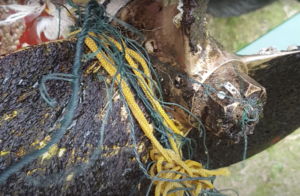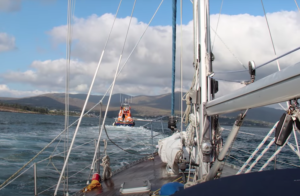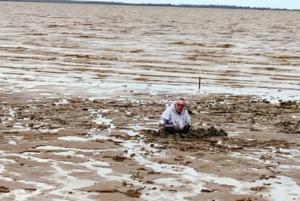Scotland’s order for marking lobster pot buoys leaves CA urging rest of UK to follow suit

The Cruising Association’s (CA) Regulations and Technical Services group (RATS) has welcomed the initiative taken by the Scottish government which came into force on 20 June making unlawful the marking of a string of creels (lobster or crab pots) with anything other than a buoy made for that purpose.
RATS has been vociferously campaigning for clearer marking of static fishing gear and lobster pot markers since 2017, so that yachts and other vessels remain free from entanglement.
But, says Ian Wilson, the CA’s lead on lobster pots: “Progress towards a real solution is so slow in England, that someone is going to die. A family will watch a loved one drown, trying to free an entanglement, before anything is done. And even then, will legislators care that someone has been killed?”
MIN has followed the CA’s campaign, from the working group being established to Scotland taking tentative steps forward. RATS is now pressing for the rest of the UK to follow Scotland’s example, which it applauds for its simplicity.
“Scotland’s solution is staggeringly simple, and quite clever,” says Wilson. “It’s marking using a buoy made for that purpose.”
This means, Wilson explains, that the buoy may have enough buoyancy to keep the line tight if a boat goes over it, and that the buoy can be seen in anything other than a flat calm.
“A two litre milk bottle is not visible at all,” Wilson says.

Propeller tangled in fishing gear
“I’ve been caught twice, and would be hard pushed to find someone who hasn’t. Most people have had entanglements. And most people find a way of clearing it themselves and then go home.”
Becoming entangled in fishing rope work is more than an inconvenience. It can quickly become hazardous to life and limb, says the CA. Firstly, if the vessel is immobilised close to the shore and a sea is running, there can be shipwreck. Secondly, if the vessel is moving fast, it can be capsized. Thirdly, most skippers will seek to free themselves, sometimes by entering the water, risking injury and/or hypothermia.
The National Federation of Fishermen’s Organisations, which has been working closely with the CA, is of the view that most of its members comply with the current voluntary guidance (using a weighted rope, and buoy for visual ID and avoidance) but it believes that there are far more ‘hobby fishermen’ now active who, being unlicensed, have no interest in making their gear either visible or compliant.
“Professional fishermen don’t use dodgy gear. It’s the rogue fishermen, the amateurs who are unlawfully laying a small line of pots to make some quick money,” agrees Wilson.
RATS began its campaigning when Norman Kean wrote an article about being entangled and how it was life threatening. The committee decided to campaign for a review of the legislation, rules, practice and guidance.
“We pulled stakeholders together, made the parliamentary petition and also the video,” says Wilson. “To our amazement, the petition went past 10,000 signatures which became the peg to hang the pressure on.”
The petition was combined with data to help add to the cause.

Getting a tow from the RNLI
Ongoing figures collected by the RYA suggest that between May 2017 to March 2018 there were 138 reports of which 84 were entanglements. All but 27 of these managed to free themselves.
Additionally, for the last available twelve month reporting period (2017) the RNLI responded to 295 incidents involving ‘fouled stern gear’.
But, says Wilson: “The statistics underreport the number of boats that get caught, as people clear the lines and then go home and forget about it.”
An agreement was reached that the MCA would convene a working party of stakeholders, to meet twice a year.
“There can be no appetite for primary legislation as the system is jammed up with Brexit legislation,” says Wilson, who says that meeting twice a year is not enough to make progress towards a real solution. The slow pace leads to a real risk of a death occurring because of entanglement and its associated risks. But he’s pragmatic.
“The government departments must have 2,000 higher priorities and I fully understand why two meetings a year is the best we’re going to get. But it isn’t going to fix the problem.”
In Scotland, Wales and Northern Ireland, regulations with regard to fish conservancy are within the remit of the devolved administrations, which is why Scotland has been able to move on this.
“Scotland’s structure for fisheries and marine conservation doesn’t have all the bittiness that England has,” Wilson says. “They can make and implement independent and consistent decisions.”
In England, since 2009, the regulatory powers, including the making of local bylaws, lie with the Inshore Fisheries and Conservation Authorities of which there are ten. However, their remit only extends up to six miles out to sea. Beyond that lies the jurisdiction of the Marine Management Organisation. Departmental responsibility lies with DEFRA.
However maritime safety issues for the whole of the UK lie within the remit of the Department for Transport’s Maritime and Coastguard Agency.










